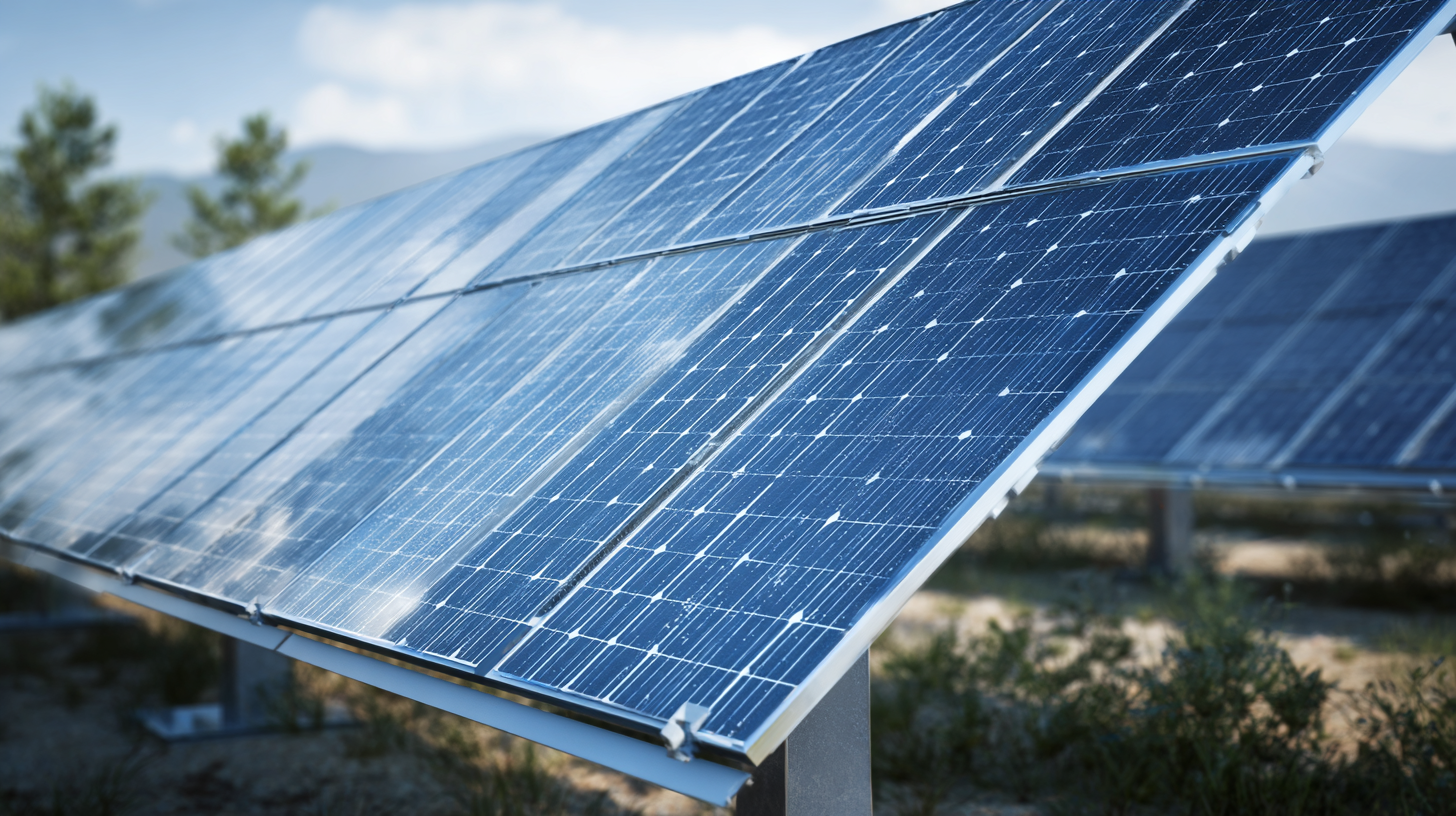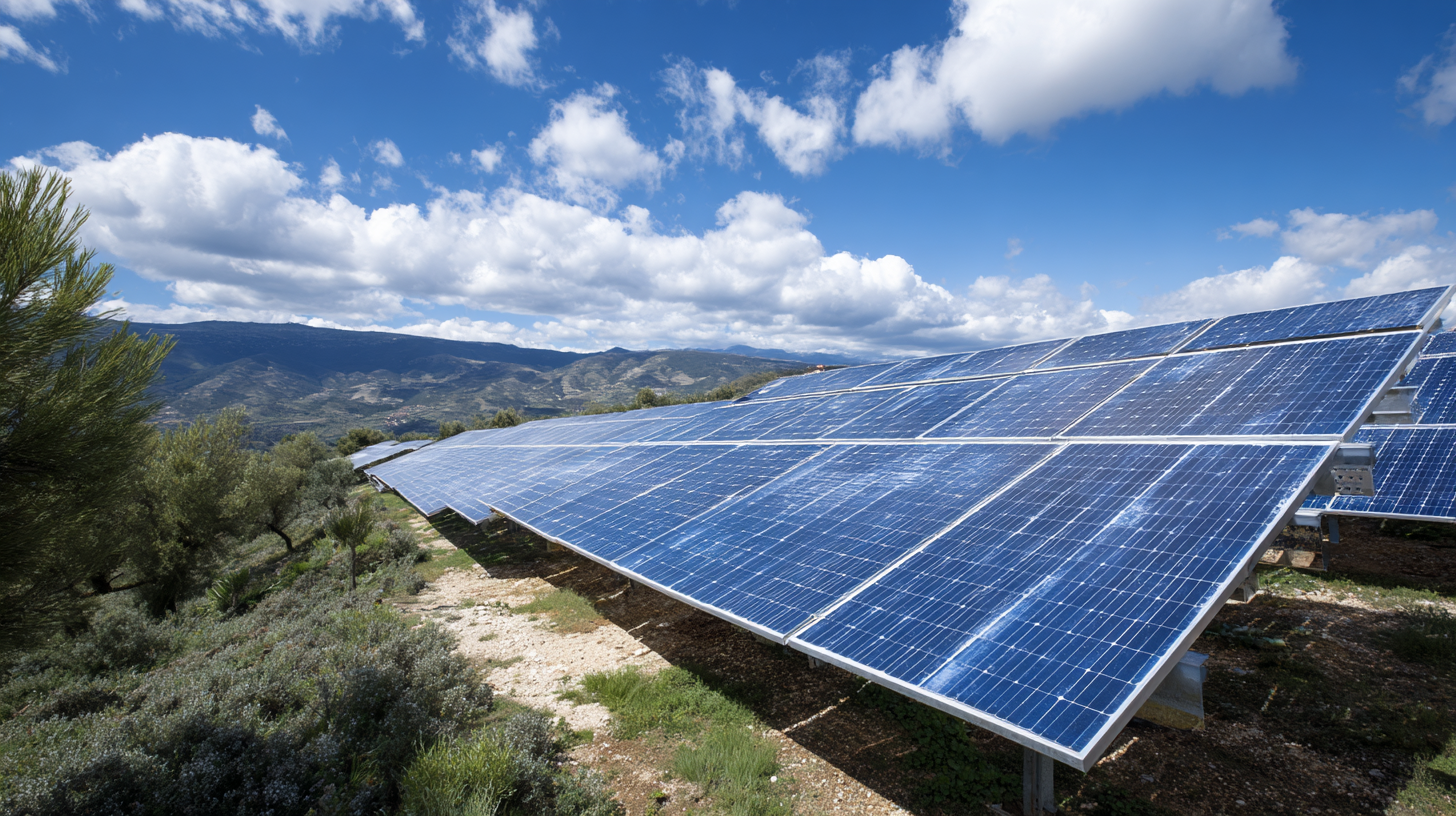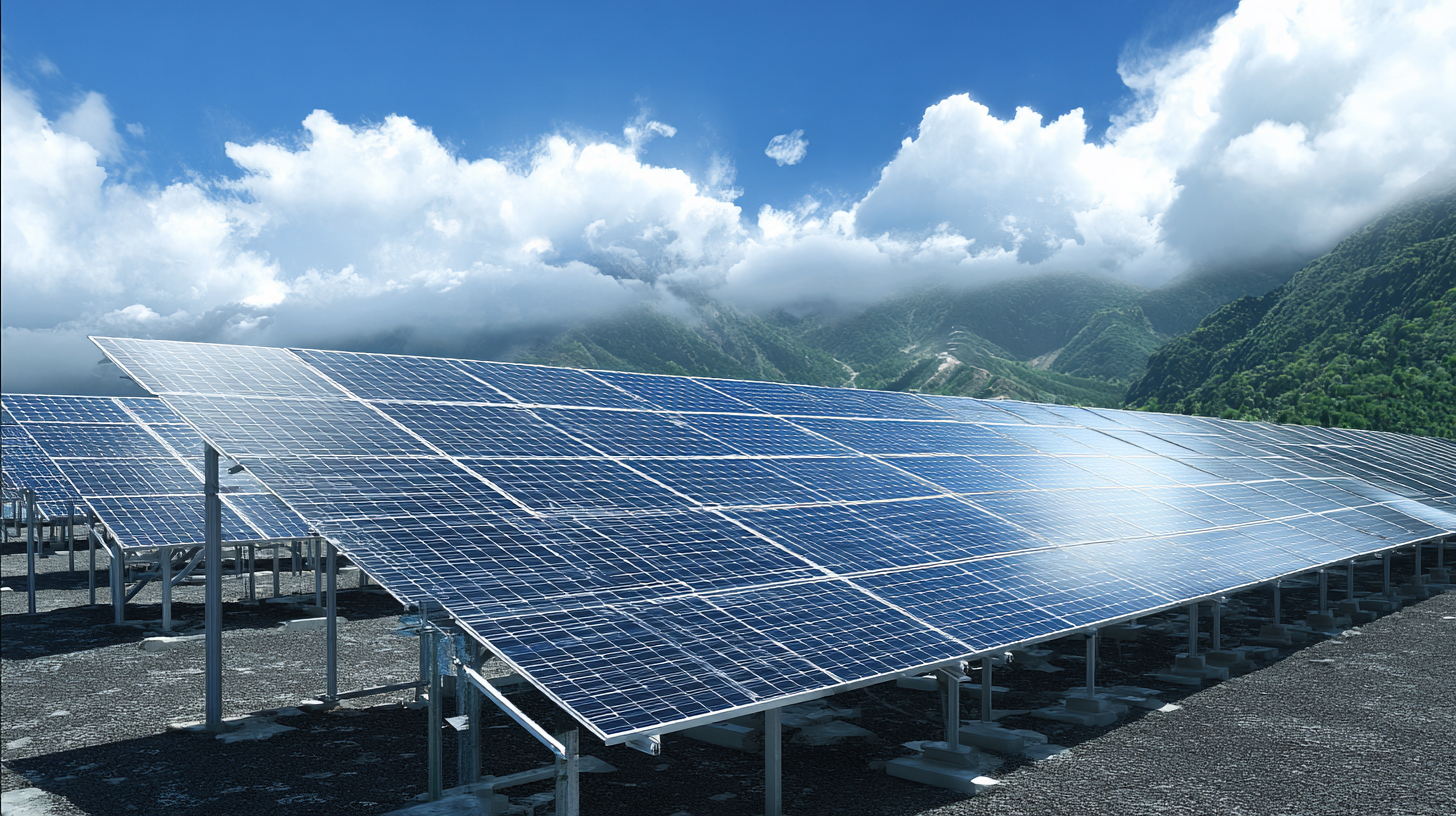Unlocking the Specifications of the Best Solar Solutions for Global Buyers
As the world increasingly shifts towards sustainable energy, solar solutions have emerged as a pivotal component in the quest for clean power. According to the International Energy Agency (IEA), global solar energy generation capacity is expected to exceed 1,100 gigawatts by 2025, with significant contributions from innovative manufacturing hubs like China. This country not only leads in production but also sets benchmarks for quality and efficiency, making it a powerhouse in the global solar market. With a robust export capability, Chinese solar solutions stand at the forefront, catering to the growing demands of environmentally conscious buyers across various regions. In this blog, we will uncover the specifications of the finest solar technologies that are shaping the industry, highlighting the excellence of Chinese manufacturers and their role as market leaders.

Understanding Key Solar Technology Specifications for Global Buyers
As global buyers seek solar solutions, understanding key technology specifications is crucial for making informed decisions. The latest industry reports indicate that the demand for high-efficiency solar panels is skyrocketing, with top manufacturers racing to innovate. According to the Energy Storage System Buyer’s Guide 2025, advancements in energy storage technology are also becoming a focal point, offering residential and commercial sectors new opportunities to incorporate reliable systems into their energy strategies.
Tip: When comparing solar panels, look for performance metrics such as efficiency rating, warranty duration, and degradation rates. These criteria provide a clearer picture of the long-term value of your investment.
Moreover, the emergence of marketplaces like the iSolar Exchange is transforming how buyers engage with solar products. By facilitating a direct connection between manufacturers and consumers, these platforms enhance transparency and competitiveness. As noted in recent findings, staying updated with inverter and energy storage technologies is critical, as PVEL's new inverter test center demonstrates the industry's commitment to quality assurance across various project scales.
Tip: Before finalizing your solar purchase, ensure you analyze the total cost of ownership, including installation and maintenance, to achieve the best overall value.
Top 5 Solar Panel Efficiency Ratings and Their Importance
When considering solar panel efficiency, understanding the ratings can significantly impact purchasing decisions, particularly for global buyers looking for the most reliable technology. According to the National Renewable Energy Laboratory (NREL), the efficiency of solar panels has increased dramatically in recent years, with leading models achieving over 22% efficiency. This is a crucial factor, as higher efficiency means more electricity generation for the same surface area, maximizing the return on investment for consumers.
The top five solar panels based on efficiency ratings commonly include models from brands like SunPower, LG, and REC Group. SunPower's Maxeon series is renowned, often exceeding 24% efficiency, which can translate into significant savings on energy bills over time. In contrast, traditional polycrystalline panels typically offer around 15-17% efficiency, making them less attractive for consumers with limited space or higher energy needs. Moreover, the importance of these efficiency ratings extends beyond immediate performance; they also correlate with long-term durability and reduced environmental impact, indicating a smarter choice for sustainable energy production that aligns with global climate goals.
Top 5 Solar Panel Efficiency Ratings
Decoding Inverter Types: Choosing the Right Fit for Your Needs
When it comes to harnessing solar energy, understanding inverter types is crucial for selecting the right solution that meets your needs. Solar inverters play a pivotal role in converting the direct current (DC) generated by solar panels into alternating current (AC) that powers your appliances. There are three main types of inverters—string inverters, microinverters, and power optimizers—each with its unique advantages and applications.
String inverters are the most common choice for residential systems due to their simplicity and cost-effectiveness. They connect multiple solar panels in a series, making installation easier and less expensive. However, they can be less efficient in situations where panels experience shading or varying light conditions. In contrast, microinverters optimize each panel's performance individually, greatly enhancing energy production in shaded environments. This makes them a great option for complex rooftop designs or installations with various orientations.
Power optimizers offer a middle ground between string inverters and microinverters. These devices work with string inverter systems to maximize energy harvest by mitigating the effects of shading and enhancing overall system performance. By understanding the differences between these inverter options, global buyers can make informed decisions that align with their specific energy needs, ensuring optimal efficiency and return on investment.
Unlocking the Specifications of the Best Solar Solutions for Global Buyers - Decoding Inverter Types: Choosing the Right Fit for Your Needs
| Inverter Type | Efficiency (%) | Warranty (Years) | Key Features | Ideal Application |
|---|---|---|---|---|
| String Inverter | 95-98% | 5-10 | Cost-effective, easy installation | Residential |
| Microinverter | 96-99% | 10-25 | High performance at low light | Rooftop systems |
| Power Optimizer | 95-97% | 5-20 | Shade tolerance, improved energy yield | Commercial and residential |
| Hybrid Inverter | 95-97% | 5-15 | Batteries compatible, smart energy management | Off-grid, grid-tied systems |
Durability and Warranty: What to Look for in Solar Solutions
When investing in solar solutions, durability and warranty are critical factors that global buyers should prioritize. According to the National Renewable Energy Laboratory (NREL), the average lifespan of solar panels is approximately 25-30 years, yet some high-performance models can last even longer. This longevity is essential for maximizing return on investment, as it determines how long homeowners can expect their systems to generate electricity without significant degradation. It is crucial for buyers to seek products made with high-quality materials, such as monocrystalline silicon, which offers better longevity and efficiency compared to other types.
Warranties also play a pivotal role in evaluating solar solutions. The Solar Energy Industries Association (SEIA) reports that most reputable manufacturers offer warranties ranging from 10 to 25 years for solar panels. A comprehensive warranty should cover both the product and performance, ensuring that buyers receive replacement panels if they fail or do not meet promised output levels. Consumers should closely examine these warranties and opt for manufacturers that provide robust support and long-term guarantees on their products, as they reflect the company’s confidence in the reliability and performance of their solar solutions.

Cost vs. Benefit: Analyzing the Investment in Solar Energy
Investing in solar energy has become a critical consideration for global buyers looking to balance financial viability and sustainability. A recent report from the International Renewable Energy Agency (IRENA) indicates that the global weighted average cost of electricity from solar photovoltaics (PV) has declined by 89% since 2009, making solar one of the most cost-effective energy sources. In 2020, the levelized cost of electricity (LCOE) for utility-scale solar PV projects fell to approximately $40 per megawatt-hour, highlighting a significant price advantage over traditional fossil fuels. This impressive decrease in cost has provoked a surge in solar installations across diverse markets, with investments reaching a staggering $100 billion in 2020 alone.

However, while the initial capital investment in solar energy systems can be substantial, the long-term benefits cannot be overlooked. According to a study by the National Renewable Energy Laboratory (NREL), homeowners can expect an average return on investment (ROI) of around 20%, with solar panels generating savings of up to $1,000 annually on electricity bills. Furthermore, the increasing efficiency of solar technologies, as reported by the U.S. Department of Energy, states that average solar panel efficiencies have surpassed 20%, contributing to a quicker payback period. As global energy needs continue to evolve, analyzing the cost versus benefit of solar solutions remains essential for buyers aiming to make informed investments in renewable energy.
